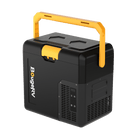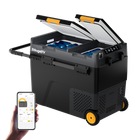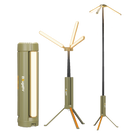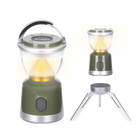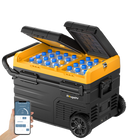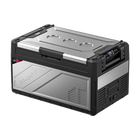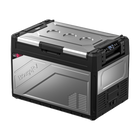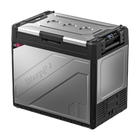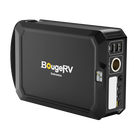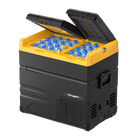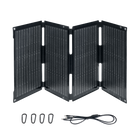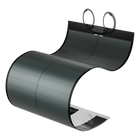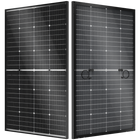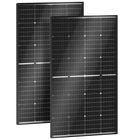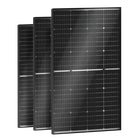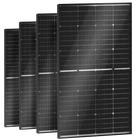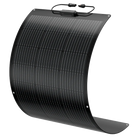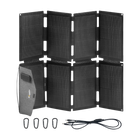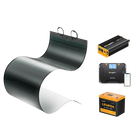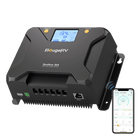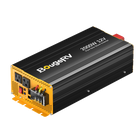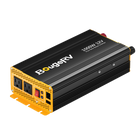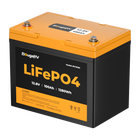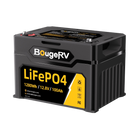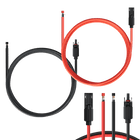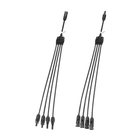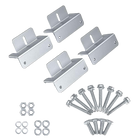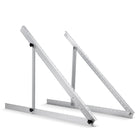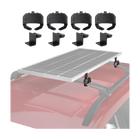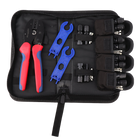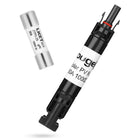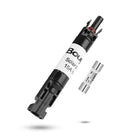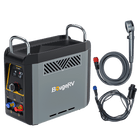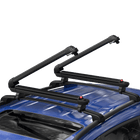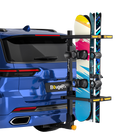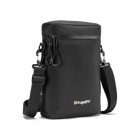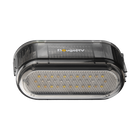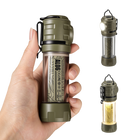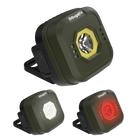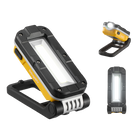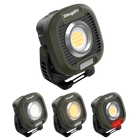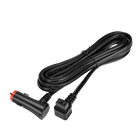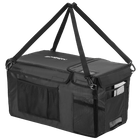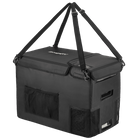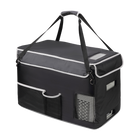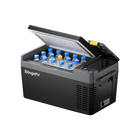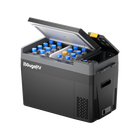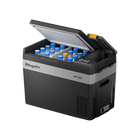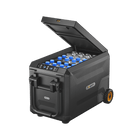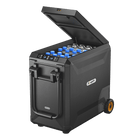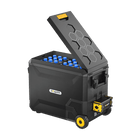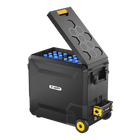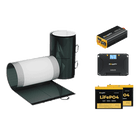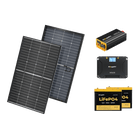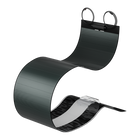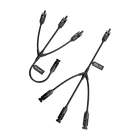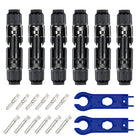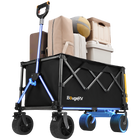How to Save Money with Solar Panels: A Step-by-Step Guide to Using BougeRV's Solar Calculator


Switching to solar power has become increasingly popular in recent years due to its cost-saving benefits and positive impact on the environment. If you're considering making the switch, you might be wondering how much you can save on your electricity bills.
Fortunately, with BougeRV's solar calculator, you can easily estimate the cost savings of using solar power for your specific need.
In this step-by-step guide, we'll walk you through how to use BougeRV's solar calculator to calculate your cost savings and choose the right solar panels, battery capacity, and inverter type to maximize your savings. So, let's get started!
How to Use BougeRV's Solar Calculator
BougeRV's solar calculator is a powerful tool that allows homeowners to estimate the cost savings of switching to solar power. The calculator takes into account factors such as your location, roof orientation and size, electricity usage, and more to provide a detailed analysis of your potential savings.
With this tool, you can compare different solar panel configurations, battery capacities, and inverter types to find the best solution for your needs.
To get started with BougeRV's solar calculator, follow these simple steps:
- Go to the BougeRV solar calculator page at https://www.bougerv.com/pages/solar-calculator
- Select your location by entering your zip code or city and state
- Enter your monthly electricity usage in kilowatt-hours (kWh)8
- Select your roof type and orientation
- Choose your desired solar panel configuration, battery capacity, and inverter type
- Review the estimated cost savings and return on investment (ROI)
To get the most accurate estimate of your cost savings, it's important to input accurate data into the solar calculator. Here are a few tips to keep in mind:
- Check your monthly electricity bills to determine your average usage in kWh
- Use a compass or smartphone app to determine your roof orientation
- Measure your roof size as accurately as possible
- Research the different solar panel, battery, and inverter options to choose the best configuration for your needs
To give you an idea of the potential cost savings with solar power, here are a few real-life examples based on different types of homes and electricity usage levels:
Small apartment: 1-bedroom apartment with average monthly electricity usage of 500 kWh. Estimated savings of $5000 over 25 years with a 2 kW solar panel system.
Medium-sized house: 3-bedroom house with average monthly electricity usage of 1000 kWh. Estimated savings of $15,000 over 25 years with a 5 kW solar panel system and 10 kWh battery.
Large family home: 5-bedroom house with average monthly electricity usage of 2000 kWh. Estimated savings of $35,000 over 25 years with a 10 kW solar panel system and 20 kWh battery.
By following the above steps and tips, you can use BougeRV's solar calculator to estimate the cost savings of switching to solar power for your home. Don't forget to compare different solar panel configurations, battery capacities, and inverter types to find the best solution for your needs.
Choosing the Right Solar Panels, Battery Capacity, and Inverter Type
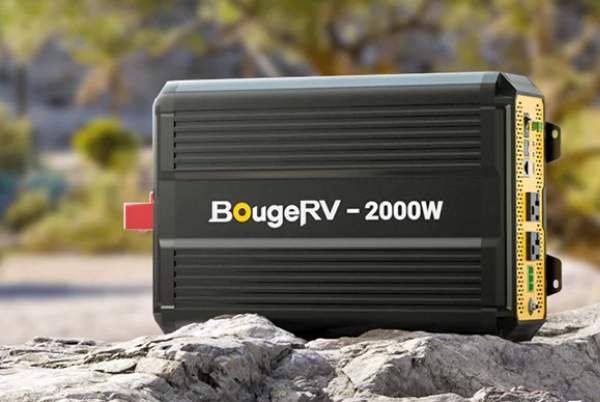
When it comes to saving money with solar panels, choosing the right solar panels, battery capacity, and inverter type is crucial. These components can greatly impact the efficiency and cost-effectiveness of your solar power system.
BougeRV's solar calculator takes into account these factors when estimating cost savings. By inputting information about your specific solar panel, battery, and inverter choices, you can get a more accurate estimate of your potential cost savings.
To maximize cost savings, it's important to choose the right components for your solar power system. Here are some tips to keep in mind:
Solar Panels:
When selecting solar panels, consider the efficiency and durability of the panels. Higher efficiency panels can generate more power with less surface area, while durable panels can withstand harsh weather conditions.
Battery Capacity:
Battery capacity determines how much energy your system can store for use during non-sunlight hours. It's important to choose a battery with enough capacity to meet your energy needs, but not so much that you're overspending on unnecessary storage capacity.
Inverter Type:
The inverter converts the DC power produced by your solar panels into the AC power that can be used by your home's electrical system. There are different types of inverters, such as string inverters and microinverters. Consider the size of your system and your budget when choosing the type of inverter.
It's also important to compare different options for solar panels, batteries, and inverters. Look at factors such as cost, efficiency, and warranty when making your decision. BougeRV's solar calculator can help you compare different options and estimate the cost savings of each.
By choosing the right components for your solar power system, you can maximize your cost savings and enjoy the benefits of clean, renewable energy.
Other Ways to Save Money with Solar Power
As solar power becomes more accessible and affordable, it’s not just good for the environment – it’s also good for your wallet. In addition to the savings you’ll see on your monthly electricity bill, there are also a number of other ways to save money with solar power.
Here’s a step-by-step guide to help you take advantage of these cost-saving opportunities.
1. Tax Incentives
One of the biggest incentives for installing solar panels is the federal Investment Tax Credit (ITC), which provides a tax credit of up to 26% of the cost of your solar panel system. This credit applies to both residential and commercial systems and is set to decrease to 22% in 2023, so it’s important to take advantage of it while you can.
2. Net Metering
Net metering is a program that allows homeowners to sell any excess energy their solar panels produce back to the utility company. This means that if your solar panels generate more electricity than your home uses, you can earn credits on your utility bill that can be used to offset the cost of electricity you use when your solar panels aren’t producing as much energy.
3. Rebates and Incentives from Local Utilities
Many local utilities offer rebates and incentives for installing solar panels. These programs vary by region, so be sure to check with your local utility company to see what options are available to you.
After understanding how solar power can save you money, it's important to explore additional cost-saving opportunities like tax incentives and net metering. By taking advantage of these opportunities, you can further reduce your energy bills and increase your savings.
Now, let's move on to some tips for taking advantage of these cost-saving opportunities.
4. Research Your State and Local Incentives
In addition to the federal tax credit, many states and municipalities offer their own incentives for installing solar panels. Be sure to research what incentives are available in your area so you can take full advantage of them.
5. Work with a Reputable Solar Installer
When it comes to taking advantage of tax incentives, rebates, and other cost-saving opportunities, it’s important to work with a reputable solar installer. Look for a company with experience installing solar panels and a track record of helping their customers take advantage of all available incentives.
6. Maximize Your Energy Savings
The more energy you can generate with your solar panels, the more money you can save. Consider energy-efficient upgrades for your home, such as installing LED light bulbs and improving insulation, to reduce your overall energy usage and maximize your savings.
In conclusion, there are many ways to save money with solar power beyond just reducing your monthly electricity bill. By taking advantage of tax incentives, net metering, and local rebates, you can further reduce the cost of your solar panel system.
Work with a reputable solar installer to ensure you’re getting the best possible price and maximize your energy savings by making energy-efficient upgrades to your home.
Conclusion

Switching to solar power can provide numerous benefits, including reduced electricity bills and environmental sustainability. By following the step-by-step guide outlined in this article, you can use BougeRV's solar calculator to estimate your potential cost savings and choose the best solar panel, battery, and inverter options to maximize those savings.
We encourage you to give BougeRV's solar calculator a try and explore the possibilities of switching to solar power. It's a great investment for your home and the environment.
In summary, switching to solar power and using BougeRV's solar calculator can save you money while also reducing your carbon footprint. Don't hesitate to take advantage of this opportunity and make the switch today. And, for accurate and reliable cost savings estimates, we highly recommend using BougeRV's solar calculator.







